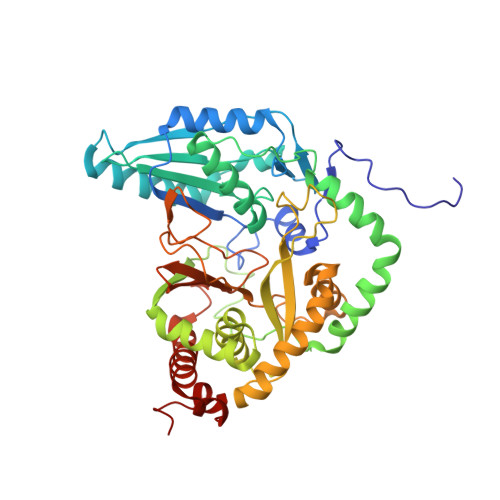Global protein dynamics as communication sensors in peptide synthetase domains.
Mishra, S.H., Kancherla, A.K., Marincin, K.A., Bouvignies, G., Nerli, S., Sgourakis, N., Dowling, D.P., Frueh, D.P.(2022) Sci Adv 8: eabn6549-eabn6549
- PubMed: 35857508
- DOI: https://doi.org/10.1126/sciadv.abn6549
- Primary Citation of Related Structures:
7RY6 - PubMed Abstract:
Biological activity is governed by the timely redistribution of molecular interactions, and static structural snapshots often appear insufficient to provide the molecular determinants that choreograph communication. This conundrum applies to multidomain enzymatic systems called nonribosomal peptide synthetases (NRPSs), which assemble simple substrates into complex metabolites, where a dynamic domain organization challenges rational design to produce new pharmaceuticals. Using a nuclear magnetic resonance (NMR) atomic-level readout of biochemical transformations, we demonstrate that global structural fluctuations help promote substrate-dependent communication and allosteric responses, and impeding these global dynamics by a point-site mutation hampers allostery and molecular recognition. Our results establish global structural dynamics as sensors of molecular events that can remodel domain interactions, and they provide new perspectives on mechanisms of allostery, protein communication, and NRPS synthesis.
Organizational Affiliation:
Department of Biophysics and Biophysical Chemistry, Johns Hopkins University School of Medicine, Baltimore, MD, USA.














